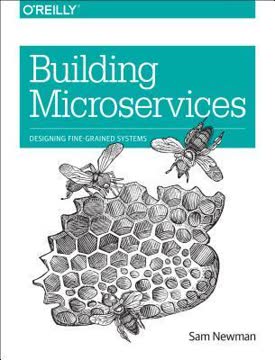Key Takeaways
1. Music as a Mirror of Society and Self
Every musical composition is a product of its time and place, as well as its composer’s conscious and unconscious mind. Each such work mirrors its contemporary world in its own unique way.
Music reflects history. Western music, from ancient times to the modern era, has consistently mirrored the social, political, religious, and aesthetic ideals of its time. Changes in society, technology, and philosophy directly influence musical style, texture, and form. Understanding this connection enhances appreciation.
Composer's ego emerges. While early music was often anonymous or served strict religious guidelines, the composer's individual voice became increasingly prominent starting in the High Middle Ages. This rise of the composer's ego fueled a constant search for new modes of expression, accelerating stylistic change alongside societal shifts.
Understanding concert music. Engaging with concert music offers profound benefits beyond mere entertainment. It provides intellectual stimulation, enhances problem-solving skills, and acts as a universal, nonverbal language offering access to diverse historical and cultural traditions, allowing listeners to transcend their own reality.
2. Ancient Roots and Early Church Monophony
The ancient Greek Doctrine of Ethos, based on the Pythagorean view of music, claimed music to be a microcosm of the cosmos, ruled by the same mathematical laws as the cosmos.
Greek humanism. Ancient Greek culture viewed music humanistically, believing in its power to influence nature, heal, and change human emotions. Music was integral to life, used in drama and ceremony, and its structure was linked to the mathematical order of the universe through Pythagoras's work on intervals and consonance.
Roman adoption and decline. The Romans largely adopted Greek musical ideals, but the fall of the Roman Empire led to a loss of much ancient musical knowledge, preserved only in fragments. The Roman Catholic Church emerged as a cultural preserver during the Dark Ages (600-1000 C.E.), shaping music's role.
Church music's purpose. The early Church fostered music as a "servant" of religion, prioritizing divine beauty and rejecting pagan influences like instruments, large choruses, and dance rhythms. This led to the cultivation of plainchant (Gregorian chant), a monophonic, unaccompanied, rhythmically free style tied strictly to the text, designed for meditation and liturgy.
3. The Middle Ages: Rise of Notation and Polyphony
To facilitate the composition, the promulgation, and performance of such composed polyphony, a universally understood system of musical notation was developed, re¿ ned, and eventually standardized.
Dark Ages plainchant. The early Middle Ages (600-1000 C.E.) saw plainchant as the dominant musical form, created anonymously over centuries. Its monophonic texture, conjunct melodies, and text-driven rhythm fostered a mood conducive to prayer and represented the sole surviving written music from this period.
High Middle Ages innovation. The High Middle Ages (1000-1400 C.E.) brought societal advancements and a gradual return of civilization. Crucially, this era saw the development of composed polyphony (organum), where multiple independent melodic lines were combined. This required and spurred the development of standardized musical notation.
Ars Nova complexity. The 14th century (Ars Nova) was marked by significant change and a rise in secularism, challenging the Church's authority. Music reflected this complexity through techniques like isorhythm, manipulating rhythm and melody independently. Composers like Guillaume de Machaut created intellectually intricate polyphony, often setting secular texts and mirroring a fragmented age.
4. Renaissance: Humanism, Harmony, and Vocal Expression
The ancient Greek ideal of music as a power that can change nature and move souls profoundly inÀ uenced composers of the Renaissance.
Rebirth of classical ideals. The Renaissance (15th-16th centuries) was driven by Humanism, a rediscovery of ancient Greek and Roman culture. This led to a renewed focus on human life and accomplishments, influencing music through the desire to recapture the emotional power attributed to ancient Greek music.
Emphasis on the word. Renaissance composers sought greater expressivity by emphasizing clear vocal declamation (musica reservata) and illustrating text meaning through "word painting." This contrasted with the melismatic and complex isorhythmic styles of the late Middle Ages, prioritizing the emotional and descriptive content of the lyrics.
Harmonic and formal evolution. The era saw experimentation with tuning systems and the development of triad-based tonal harmony, building on Pythagorean principles. While the Catholic Mass remained a central genre (Palestrina's clarity responding to the Counter-Reformation), secular genres like the madrigal became highly experimental, pushing harmonic boundaries and word painting to extremes (Gesualdo, Weelkes).
5. The Baroque Era: Logic, Extravagance, and Instrumental Power
Baroque music and art reÀ ect the era’s belief that logical systems (the invisible hand of God) rationally controlled the complexity of the world.
Science and spectacle. The Baroque Era (1600-1750) embraced rational thought, scientific observation, and codification, viewing the cosmos as an ordered mechanism. This era also celebrated extravagance and absolute monarchy, reflected in art and music that combined elaborate detail with underlying logical structures.
Birth of opera. Opera emerged around 1600, driven by the desire to recreate ancient Greek drama's emotional impact through solo singing (stile rappresentativo/recitative). This focus on individual expression contrasted with Renaissance group textures. Opera's success spurred instrumental development and the evolution of distinct vocal genres like oratorio and cantata.
Instrumental music flourishes. The Baroque saw instrumental music gain independence from vocal models, developing complex syntax and forms like fugue, passacaglia, and ritornello form (crucial for the concerto). Standardization of tuning (well-tempered system), meter, and functional harmony provided the structural control needed for the era's often exuberant melodic surfaces.
6. The Classical Era: Enlightenment, Clarity, and Structured Forms
The Enlightenment doctrine asserting that “an institution that does the greatest good for the greatest number is good” had its artistic analog in the creed that “music that is accessible and pleasing to the greatest number is good.”
Enlightenment ideals. The Classical Era (c. 1730-1800) was shaped by the Enlightenment, emphasizing reason, naturalness, and accessibility, particularly for the rising middle class. This led to a musical style prioritizing clarity, balance, tunefulness, and expressive restraint, often called the Viennese Classical style due to its flourishing in Vienna.
Homophony and cadence. Classical music favored homophonic texture, where a clear melody is supported by accompaniment, making it more accessible than Baroque polyphony. The deliberate use of cadences created clear phrase structures and a sense of narrative progression, contrasting with the continuous flow of Baroque music.
New instrumental forms. Building on Baroque antecedents, new forms like theme and variations, minuet and trio, rondo, and especially sonata form were developed or refined. Sonata form, with its dramatic contrast and development of multiple themes, became central to genres like the symphony and solo concerto, reflecting the era's interest in individual and collective interaction.
7. Beethoven's Revolution: Music as Heroic Self-Expression
In his mature music, Beethoven combined the Enlightenment spirit of individuality and the spirit of revolutionary change that characterized Europe at the time with his own personality, which required that music be a mode of self-expression.
Bridging eras. Ludwig van Beethoven (1770-1827) is a pivotal figure, mastering the Classical style before forging a revolutionary path. His music, particularly from his "heroic period" (1803-1815), embodies the spirit of individualism and revolutionary change, moving beyond Classical restraint towards intense self-expression.
Innovations in form and content. Beethoven used Classical forms contextually, bending them to serve his expressive needs. His music is characterized by pervasive motivic development, creating ongoing dramatic narratives. Rhythm became a powerful, independent element, and originality itself became a primary artistic goal, setting a precedent for future composers.
Symphony No. 5 as allegory. Beethoven's Symphony No. 5 exemplifies his revolutionary approach. Its famous opening motive is developed relentlessly, becoming a metaphor for struggle and eventual triumph (C minor to C major). The symphony's dramatic arc, innovative structure (like the scherzo-to-finale transition), and intense emotional journey profoundly impacted subsequent generations.
8. Romanticism: Emotion, Narrative, and Formal Innovation
For many composers working in the 19th century, or the Romantic Era, expressive content came to shape form.
Intensified expression. The Romantic Era (19th century) saw an intensification of Classical expressive elements, prioritizing extreme emotional states, the macabre, nature, and nationalism. Music became the most Romantic art form, valued for its mystery and power of suggestion, often reflecting the composer's inner world.
Formal challenges and solutions. The Romantic emphasis on spontaneity and individuality challenged traditional Classical forms. Composers responded in various ways:
- Using Classical forms contextually (like Beethoven)
- Creating miniature forms (e.g., German Lied, character pieces for piano)
- Developing program music (instrumental music based on literary sources)
- Employing cyclical thematic use for large-scale unity (e.g., Berlioz's idée fixe)
Program music's rise. Program music, like Berlioz's Symphonie fantastique or Tchaikovsky's Romeo and Juliet, allowed composers to structure works based on external narratives. This provided a framework for large-scale instrumental pieces while accommodating Romanticism's desire for specific, often autobiographical, emotional storytelling.
9. 19th-Century Opera: Italian Song vs. German Drama
The revolutionary Richard Wagner rejected the traditions of Italian and French opera to create an all-inclusive music drama...
Italian bel canto tradition. 19th-century Italian opera, exemplified by Rossini, Bellini, and Donizetti (bel canto composers), remained largely conservative and commercially driven. It prioritized beautiful singing, tuneful melodies, and clear divisions between aria and recitative, focusing on human relationships and emotional directness (Verdi).
German experimentation. German opera developed later, rejecting Italian models and embracing uniquely German elements like folklore, the supernatural, and the German language's rhythmic character (Weber's Der Freischütz). This tradition was more experimental and philosophical, culminating in Richard Wagner's revolutionary music dramas.
Wagner's Gesamtkunstwerk. Richard Wagner (1813-1883) sought to create a "total work of art" (Gesamtkunstwerk), integrating drama, poetry, and music seamlessly. He abolished traditional aria/recitative divisions, used continuous music, and elevated the orchestra's role to reveal psychological truth through leitmotifs (recurring musical themes associated with characters, objects, or ideas), profoundly influencing later music.
10. Early 20th-Century Modernism: Breaking Tradition for New Expression
The turn of the 20th century saw more than just technological change and scienti¿ c discoveries. It saw the emergence of ideas that virtually shattered precepts and concepts that had been cornerstones of Western thought and science for centuries.
Crisis of tonality. By the late 19th century, Romanticism's push for extreme expression strained the traditional tonal system. Composers like Mahler used "abortive gestures" (dissonances, unresolved harmonies) to depict intense psychological states, signaling that the traditional language was becoming insufficient for new expressive needs.
Debussy's Impressionism. Claude Debussy (1862-1918) initiated a significant break, influenced by French language, Symbolist poetry, and Impressionist painting. He prioritized timbre, used non-traditional scales (pentatonic, octatonic), avoided traditional harmonic function, and created a sense of static, atmospheric time, treating the orchestra as a palette of individual colors.
Stravinsky and Schoenberg. Igor Stravinsky (1882-1971) absorbed Debussy's influence but focused on rhythmic innovation, using asymmetrical rhythms and layered ostinati to create powerful kinetic energy (The Rite of Spring). Arnold Schoenberg (1874-1951), seeing himself as continuing German tradition, pursued the "emancipation of dissonance," leading to freely atonal music (Pierrot Lunaire) that explored the depths of the human psyche, fundamentally changing Western music's direction.
Last updated:
Review Summary
How to Listen to and Understand Great Music receives overwhelmingly positive reviews, with readers praising Robert Greenberg's engaging and passionate teaching style. Many find the course life-changing, opening their eyes to the beauty and complexity of classical music. Listeners appreciate Greenberg's humor, historical context, and ability to make complex musical concepts accessible. The comprehensive nature of the course, covering music from ancient times to the 20th century, is highly valued. Even those with prior musical knowledge find the lectures informative and entertaining.
Similar Books






Download PDF
Download EPUB
.epub digital book format is ideal for reading ebooks on phones, tablets, and e-readers.




